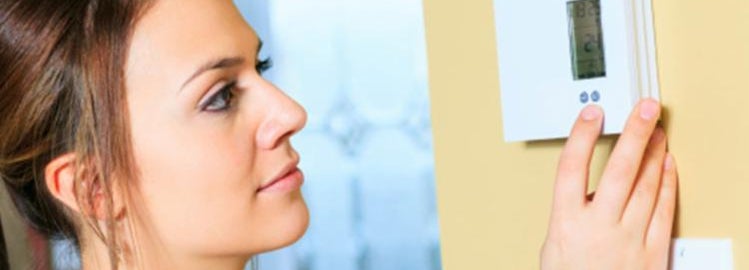Why it Pays to Have Energy-Efficient HVAC Equipment

It doesn’t happen often, but sooner or later many homeowners are faced with replacing their heating and cooling systems with newer models. This is a big-ticket project that takes a significant amount of funds from the household budget.
But there are advantages to new equipment. If your central air-conditioning system or furnace is over 15 years old, newer equipment will be much more energy-efficient. It will burn less fossil fuels, which will reduce your carbon footprint. New equipment will make your house feel more comfortable and it will help you pay less for energy. But how much less?
Figuring out your monthly, annual or life-of-the-product savings gets tricky because energy-efficient products have higher up-front costs than standard products. One of the best ways to judge savings is to calculate the payback period. That's how long it will take you to make up the difference between the cost of highly efficient equipment and standard equipment based on the monthly energy savings. Once you hit the payback mark, the monthly and annual savings continue. Fortunately, there are online calculators that can help you determine your payback period. But to use them, you will first need to determine some information.
By the Numbers
To obtain the most accurate estimates, you need to know what you pay for the fuel that powers your heating and cooling equipment. You can find that number on your utility bills. You will also need the independent performance ratings of the equipment you are considering purchasing, which you can obtain from Energy Star or your equipment manufacturers' websites. Energy Star is a Department of Energy and Environmental Protection Agency program that sets minimums for the energy use of a number of household appliances, including heating and cooling equipment that are above industry standards. It is a voluntary program, but manufacturers who meet the requirements can display the Energy Star logo on their products. There are many heating, ventilation and air-conditioning (HVAC) products that exceed the Energy Star minimums, so it’s a good place to start.
Furnaces and boilers also have an annual fuel utilization efficiency (AFUE) rating. It measures how efficient the device is in converting fuel into heat. An AFUE of 90 percent means that all but 10 percent of the fuel is converted to heat. There are minimums for newly manufactured equipment, but some furnaces can achieve AFUE ratings of over 95 percent! Boilers typically have slightly lower AFUE ratings.
Most electricity is generated by burning oil, coal or natural gas. While all-electric furnaces can be 95 to 100 percent efficient, the high cost of electricity does not make them an economical choice. Therefore, space heaters are primarily used in warmer climates like the Southeast, where there are low heating demands. Houses that are heated with electricity are good candidates for heat pumps, especially in parts of the country where air conditioning is the dominant energy user.
Cooling equipment is measured by the seasonal energy efficiency ratio (SEER). Energy Star requires an SEER of equal to or more than 15.
Because heat pumps can work with both heating and air conditioning units, they are rated in two ways. The SEER measures the efficiency of the cooling system. The higher the number, the more efficient the system. The heating season performance factor (HSPF) measures the heating efficiency of heat pumps. The Energy Star minimum is 8.5, but models with much higher HSPF ratings are available. Discuss your options with a qualified contractor. If air conditioning is your major concern, you should generally look for a unit with a higher SEER. In cold weather areas, look for a high HSPF.
Calculate Your Payback Period
A good HVAC contractor or an equipment dealer can use all this information to calculate the payback period for you. But if you want the information before you talk with a contractor, you can run the numbers yourself. Many equipment manufacturers have online calculators that are easy to use. Energy Star also offers calculators for all types of heating and cooling equipment. Once you input your equipment’s information, the calculator will display the payback period in years and months, as well as your monthly, annual and lifecycle savings.
Make Changes Around the House
Your HVAC system does not operate in a vacuum. It’s part of your home's energy "package." There are things you can adjust within that package to make sure the equipment operates at peak efficiency.
- Get an energy audit. A professional energy audit can pinpoint areas where your house and its systems are wasting energy. That's important information to have if you are replacing heating and cooling equipment, because it will help you and your contractor choose the system that is best for your house. Some HVAC contractors will perform audits. You can also find an energy auditor online or by calling your local utility company.
- Seal the ducts. This is really part of the energy audit, but it is important enough to call out on its own. Duct work that is not properly sealed and insulated can reduce the effectiveness of the system by up to 20 percent.
- Install a programmable thermostat. Does it make sense to keep the house at 70 degrees all day during the winter if the house is empty? Programmable thermostats let you adjust their settings to reflect how you live. Save energy by reducing the temperature a few degrees during the day when the house is empty, then program it to reset to your comfortable temperatures just before you get home. You can even control some thermostats remotely from your smartphone.
In the right homes, energy-efficient heating and cooling equipment can drastically reduce your energy bill. Use the above information to determine whether or not you can save money by upgrading to a more efficient system.
